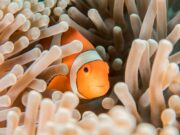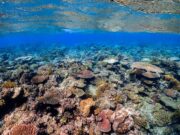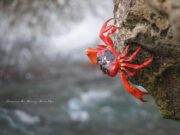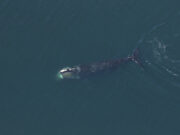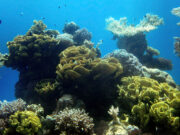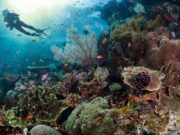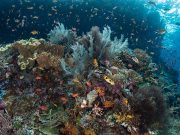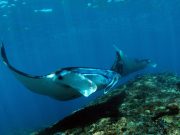Identifying marine life adds an extra dimension to scuba diving. By familiarising yourself with iconic species like manta rays, nudibranchs, lionfish and reef sharks, you’ll not only enhance your dives but also develop a deeper connection to the ocean. Whether you’re exploring the Pacific, Atlantic, Red Sea or the tropical waters of Southeast Asia, there’s always something new to discover!

This guide introduces some of the marine species that you can commonly encounter across the globe, along with where to see them and some fun facts to share with your dive buddies.
1. Clownfish
Few fish are as recognizable as the clownfish, thanks to their bright orange bodies with white stripes and their starring role in Finding Nemo. Clownfish are often found among the tentacles of sea anemones, with whom they share a fascinating symbiotic relationship. The anemone provides protection with its stinging cells, while the clownfish keeps the anemone clean and deters predators.
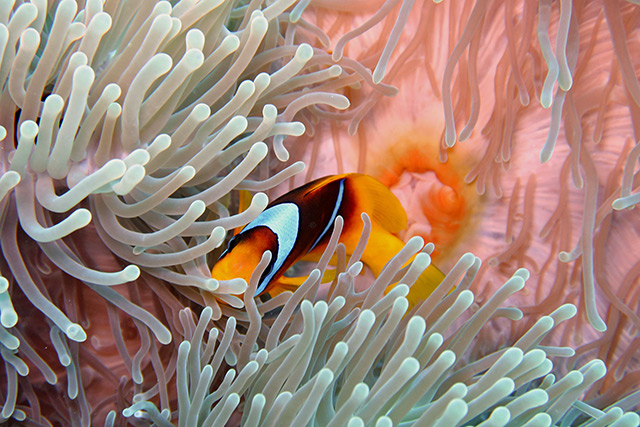
Where to see clownfish:
- Great Barrier Reef, Australia
- Similan Islands, Thailand
- Raja Ampat, Indonesia
Fun Fact: All clownfish are born male, but the dominant individual in a group can change into a female!
2. Sea Turtles
Sea turtles, including green, hawksbill, loggerhead, and leatherback, are a joy to watch underwater. They are often seen gliding through the water or resting on reefs, where they feed on seagrass, sponges, or jellyfish, depending on the turtle species. Despite their size, these gentle giants are remarkably agile.
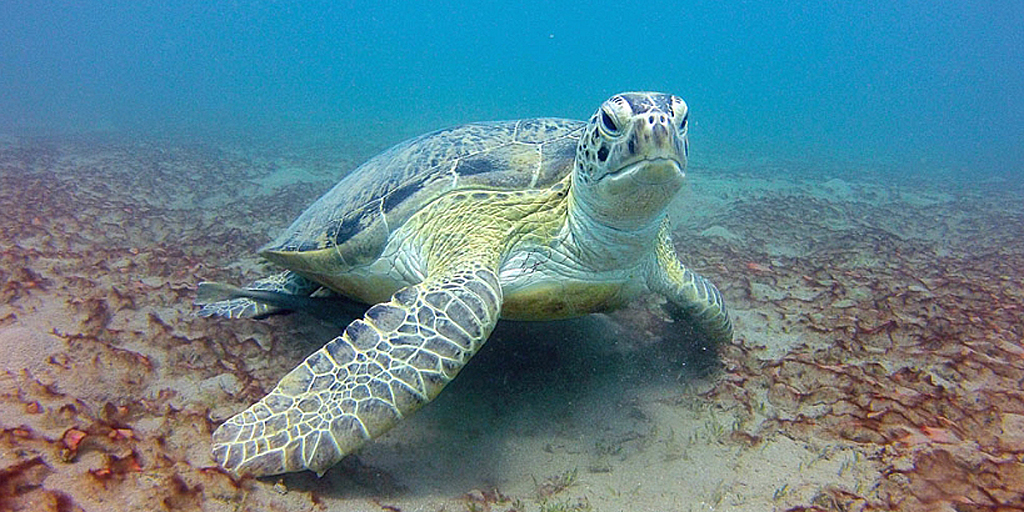
Where to spot sea turtles:
- Galápagos Islands, Ecuador
- Maui, Hawaii
- Sipadan, Malaysia
- Gili Islands, Indonesia
- Raine Island, Australia
Fun Fact: Sea turtles have an incredible sense of direction and can navigate thousands of miles back to the beaches where they hatched to lay their eggs.
3. Manta Rays
Manta rays are a bucket-list animal to encounter, with large wingspans and elegant movements as they feed. These filter feeders can often be found at cleaning stations or swimming in open water. Whether you dive with reef mantas or giant oceanic mantas, you’re in for a life-changing experience.
 Image: Deposit Photos
Image: Deposit PhotosWhere to see manta rays:
- Manta Ray Bay Resort, Yap, Federated States of Micronesia
- Hanifaru Bay, Maldives
- Kona, Hawaii
- Socorro Islands, Mexico
Fun Fact: Along with dolphins, primates, and elephants, mantas are highly intelligent, and they can recognize themselves in mirrors.
4. Nudibranchs
Nudibranchs are some of the most vibrant critters of the ocean, prized for their brilliant colors and intricate patterns. These small sea slugs come in thousands of species, each with its own dazzling appearance. They are commonly found crawling along coral reefs and rocky surfaces.
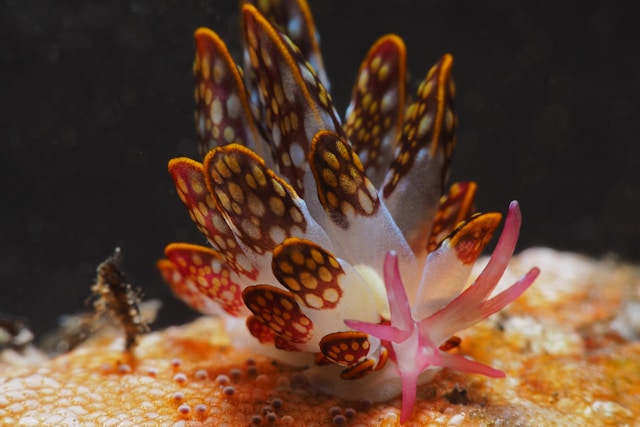
Where to see nudibranchs:
- Diving in Egypt, especially Ras Mohammed, Marsa Alam, and the Brothers Islands
- Lembeh Strait, Indonesia
- Anilao, Philippines
- Poor Knights Islands, New Zealand
Fun Fact: Nudibranchs absorb toxins from their prey (like sponges) and use them for their own defense.
5. Reef Sharks
Reef sharks, including blacktip and whitetip reef sharks, are commonly encountered in tropical waters. These sharks are generally quite shy and pose no threat to divers. Seeing these predators patrol a reef is always an exciting experience.
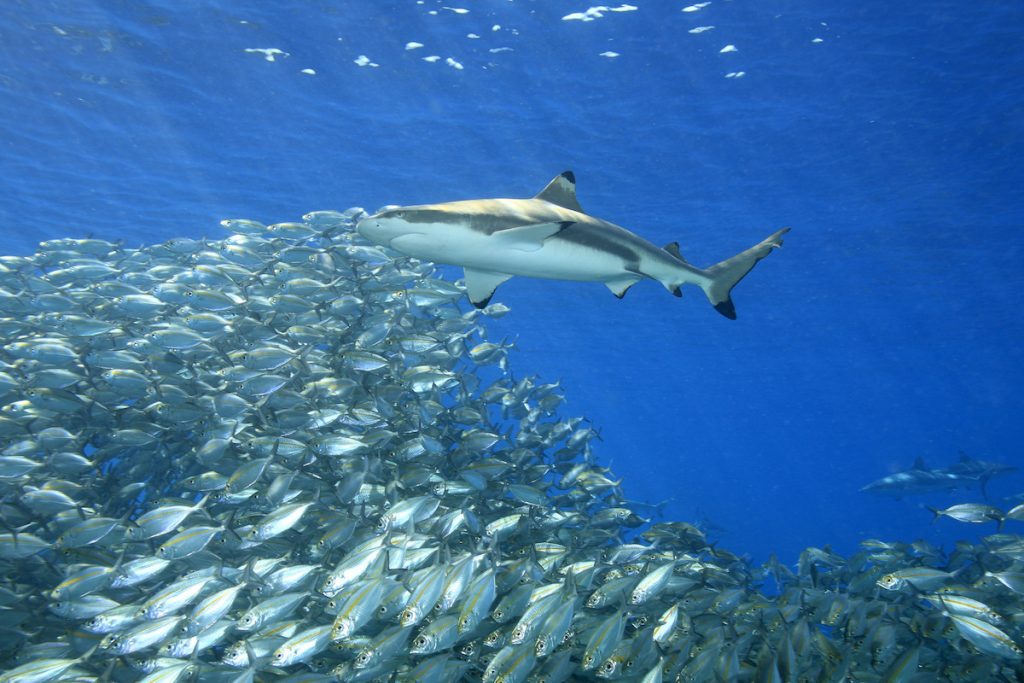 Image: DepositPhotos
Image: DepositPhotosWhere to see reef sharks:
- Red Sea, Egypt
- Tubbataha Reefs, Philippines
- Palau
Fun Fact: Sharks have been around for over 400 million years—long before the dinosaurs.
6. Parrotfish
Parrotfish are colorful reef dwellers with a critical role in maintaining coral health. They use their beak-like teeth to scrape algae off corals, helping corals to grow and thrive. They also inadvertently produce sand as a byproduct of their digestion.
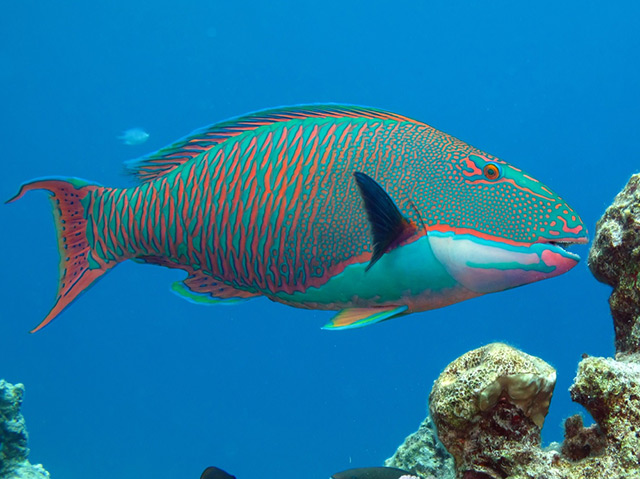
Where to see parrotfish:
- Bonaire, Caribbean
- Maldives
- Belize Barrier Reef
Fun Fact: A single parrotfish can produce up to 200 pounds of sand per year!
7. Lionfish
Lionfish are striking fish with sail-like fins and venomous spines. While they are native to the Indo-Pacific (including the Red Sea), they have become invasive in the Atlantic, where they have no natural predators. Despite their impact on ecosystems, their beauty makes them a favorite for underwater photographers.
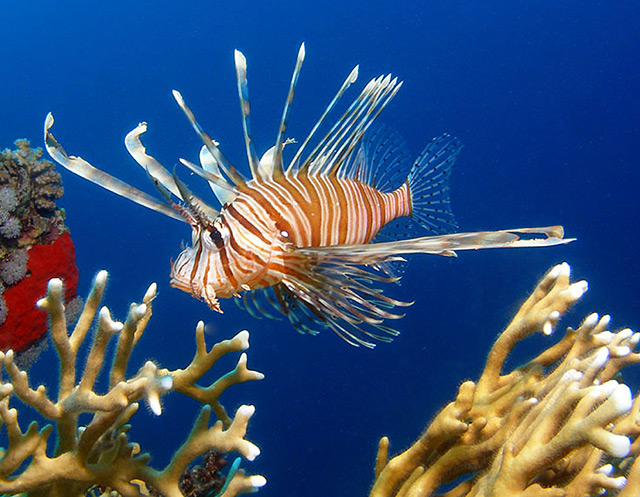
Where to see lionfish:
- Red Sea, Egypt
- Raja Ampat, Indonesia
- Bahamas (Atlantic)
Fun Fact: Lionfish can eat prey up to half their body size, and they are incredibly efficient hunters!
8. Pygmy Seahorses
Pygmy seahorses are tiny, camouflaged masters of disguise. They cling to sea fans or corals, blending perfectly into their surroundings. Spotting one is a true challenge and a memorable highlight for any diver. If you’re diving where these seahorses are found, ask your dive guide to help you spot them – their local knowledge is invaluable.
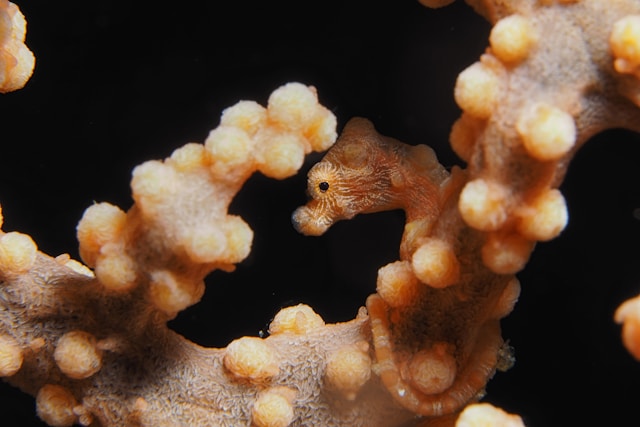
Where to see pygmy seahorses:
- Diving in Indonesia, especially Lembeh Strait and Raja Ampat
- Anilao, Philippines
Fun Fact: Pygmy seahorses are usually less than 2 cm long and are often discovered only when examining corals up close.
9. Frogfish
Frogfish are expert ambush predators that use their incredible camouflage to blend into their environment. They can look like sponges, rocks, or corals, and they move by “walking” along the sea floor with their pectoral fins. They range from 2.5 cm to 38 cm long depending on the species.
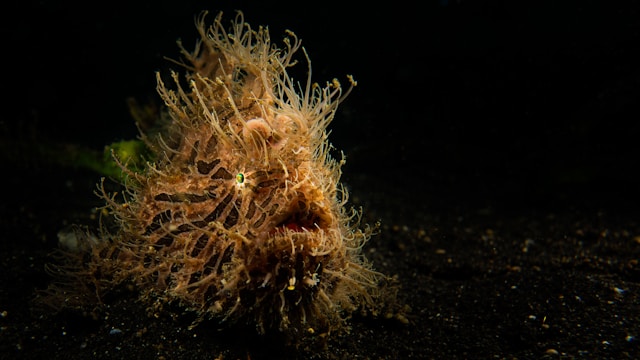
Where to see frogfish:
- Lembeh Strait, Indonesia
- Bali, Indonesia
- Bonaire, Caribbean
Fun Fact: Frogfish can expand their mouths 12 times their original size to swallow prey whole.
10. Barracuda
Barracudas are sleek pelagic fish known for their elongated bodies and sharp teeth. They are often seen in large schools or darting quickly through the water in search of prey. Their reflective scales make them particularly eye-catching in the sunlight.
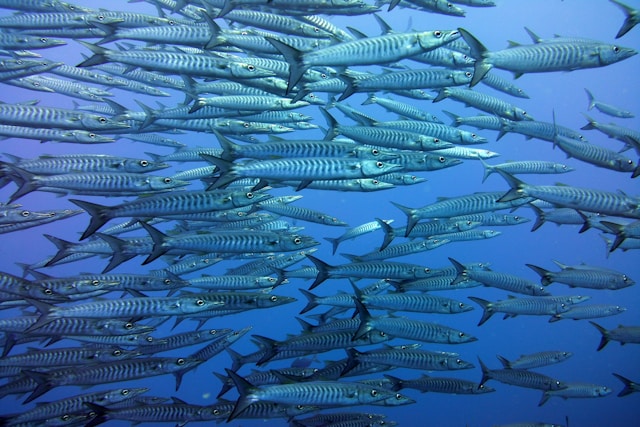
Where to see barracuda:
- Blue Corner, Palau
- Cozumel, Mexico
- Ras Mohammed, Egypt
Fun Fact: Great barracudas can swim at speeds up to 36 mph!
11. Whale Sharks
The largest fish in the sea, whale sharks are gentle filter feeders that cruise through tropical waters in search of plankton. Swimming alongside one of these giants is an unforgettable experience for any diver.
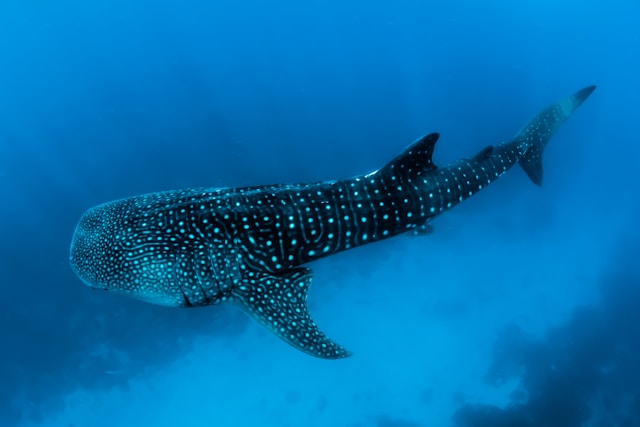
Where to see whale sharks:
- Isla Mujeres, Mexico
- Ningaloo Reef, Australia
- Donsol, Philippines
- The Maldives
Fun Fact: Fully grown adult whale sharks can weigh up to 20,000 kg, which is as much as three African elephants.
12. Moray Eels
Moray eels are often spotted peeking out from crevices and holes in coral reefs. While their toothy grins can look menacing, they are generally non-aggressive unless provoked. There are around 200 moray eel species, and they are a classic sight on coral reef dives.
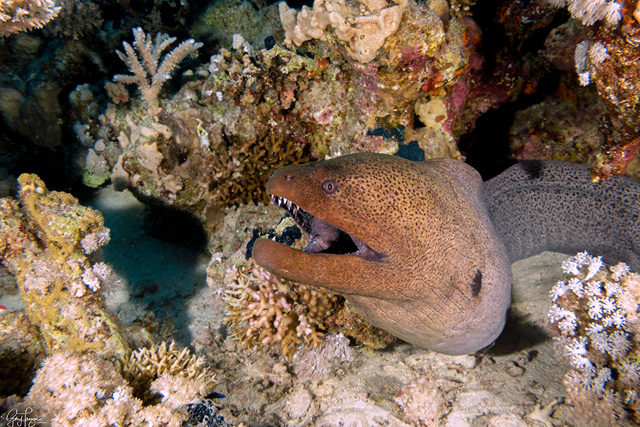
Where to see moray eels:
- Red Sea, Egypt
- Great Barrier Reef, Australia
- Bonaire, Caribbean
Fun Fact: Moray eels have two sets of jaws—their pharyngeal jaws pull prey further into their throat.
13. Pufferfish
Pufferfish are known for their ability to inflate their bodies into a spiky ball when threatened. These slow-moving fish are often seen hovering around coral reefs and sandy bottoms, making them a delight to watch and photograph.
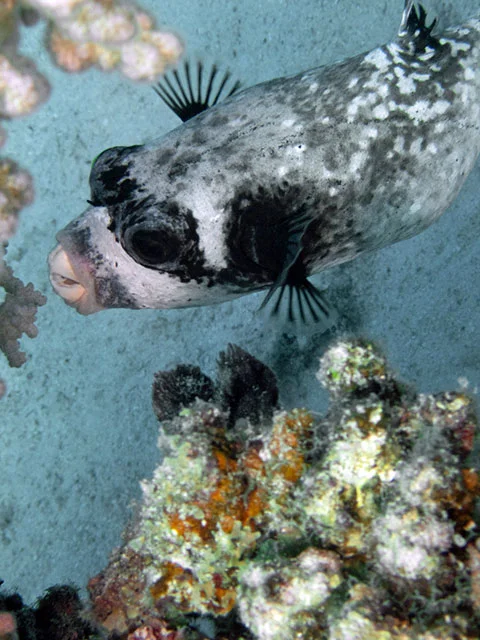
Where to see pufferfish:
- Koh Tao, Thailand
- Azores, Portugal
- Florida Keys, Florida
Fun Fact: Pufferfish contain a potent toxin called tetrodotoxin, which is 1,200 times more deadly than cyanide.
If you enjoy learning about marine life, consider joining SSI’s Environment Specialty Programs. Whether you want to explore coral identification, learn about marine ecology, or better understand sharks and rays, these courses will help you become a more knowledgeable and eco-conscious diver. You don’t need a diving license to join; the open-water sessions are optional, and the courses can all be completed online.
This article was written by Kathryn Curzon, a dive travel writer for SSI.
Image credits:
- Giant manta rays: Deposit Photos
- Blacktip Reef Shark with Fish: DepositPhotos

